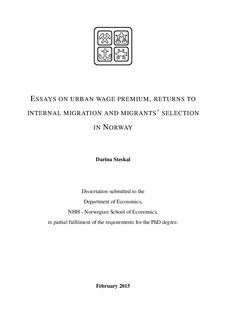| dc.description.abstract | Even though there is plenty of space on this planet (the entire world population would take up
approximately as much space as is the area of Norway - with the same population density as
in Paris), we choose to live closer and closer together, in cities and metropolitan areas. About
60 thousand people worldwide become urban every day, and although urban areas currently
occupy only 3 percent of the planet’s surface, more than half of the world’s population already
lives there. Not even the declining travel costs, which basically changed our perception of what
long distances mean, has been able to reverse or mitigate this trend in urbanization, and there is
no evidence that anything is going to. But why do cities grow? | nb_NO |

